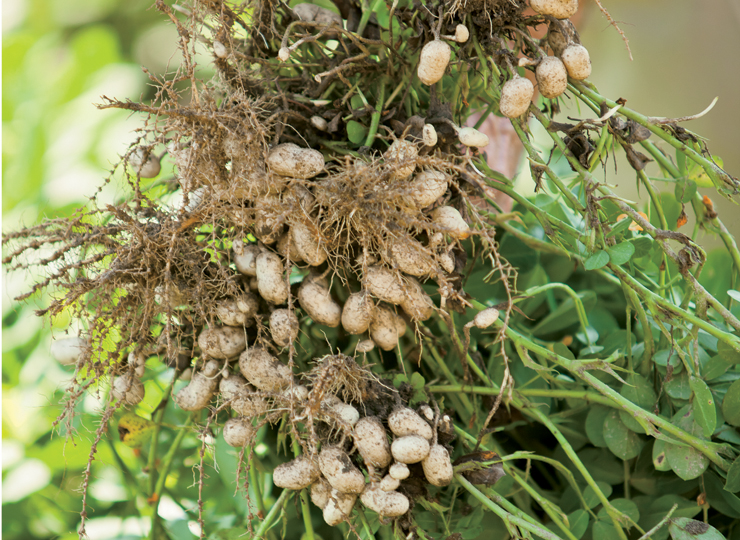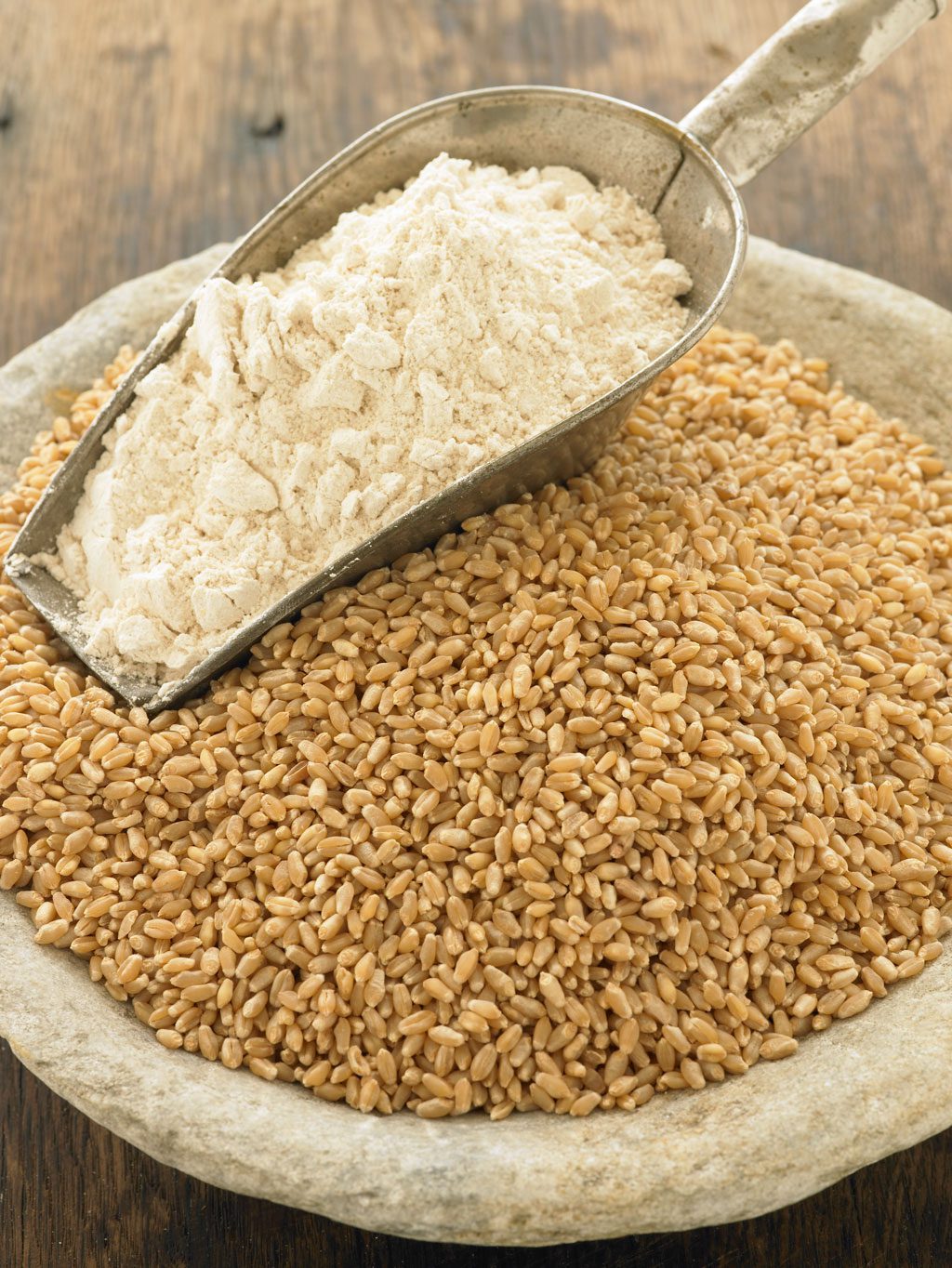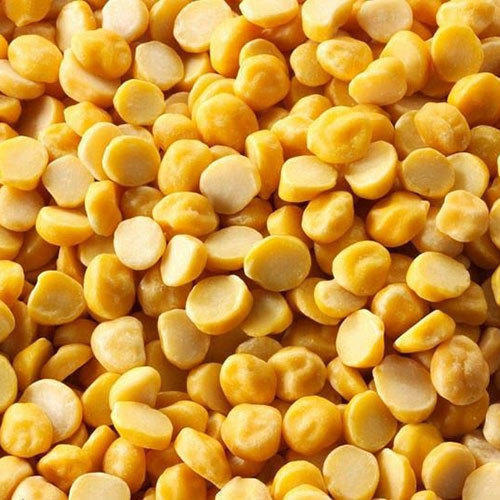Groundnuts are a popular food source worldwide, consumed either as peanut butter or groundnut oil or simply as a confectionary snack. After China, India ranks second in groundnut production, followed by the USA and Nigeria. Gujarat excels in groundnut production in India, accounting for 40% of the total output. Groundnuts usually require well-drained sandy loam or sandy clay loam soil with a pH of 6.5–7.0. As for the climate and rainfall, the crop needs precipitation of 450–1,250 mm per annum and a temperature of 27–30°C.
Irrigation for groundnuts should be given after 4 – 5 days after 20 days of sowing. At the flowering stage, give one or two irrigations. During the pod development stage, provide 2 – 3 irrigations depending on soil type. The recommended fertilizer dose for groundnut is 17:34:54 kg NPK per ha. Fertilizers are applied in the form of Urea (46% N), Superphosphate (16% P2O5), and Muriate of potash (60% K2O) for the crop.
However, some significant pests and diseases infect the quality and quantity of the yield. Following are the most common infections that lead to crop loss with their respective preventive measures.
Leaf miner: Initially, small blister-like mines are seen on the upper surface of the leaf near the midrib. As the feeding advances, mines increase in size, and the entire leaflet becomes brown, and it rolls, withers, and dries up. Heavily infected plants may die, and the crop gives a burnt appearance.
Control measures:
- Spray neem oil (15 lit/ha) or neem seed kernel extract (15 kg/ha) or neem leaf extract (25 kg/ha).
- Spray any one of the following insecticides
- Monocrotophos 36 WSC – 750 ml/ha
- Dichlorvos 76 WSC – 625 ml/ha
- Phosalone 4% Dust – 25 kg/ha
- Endosulfan4% Dust – 25 kg/ha
Thrips: The nymphs and adults of the species feed on the terminal portion; They scrap the leaf surface and suck the oozing sap; resulting in the development of dull yellowish-green patches on the upper surface and brown on the lower side; heavy infestation makes leaves curl, resulting in stunting of plants.
Control measures:
- Spray dimethoate @ 1 lit/ha if more than 5 thrips per terminal leaf only up to 30 DAS.
- Grow resistant varieties like Robut 33-1, Kadiri in endemic areas.
Collar rot or Crown rot: Rapid drying of the entire plant; entire collar region becomes dark brown and shredded; lesions develop on the stem and spread upward along the branches; the fungus produces spores on the surface of mature pods resulting in patchy black spores.
Control measures:
- Avoid deep planting of seeds and mechanical damage to the pods and kernels.
- J 11, a Spanish bunch variety, is found resistant to crown rot
- Seeds should be treated with carbendazim (2 g/ kg) or thiram (4 g/ kg) to minimize the disease occurrence.
Termites: Termites penetrate and hollow out taproots and cause wilting and premature death of plants. It also feeds on pod shells, scarifies the pod externally, and occasionally bores into them, making them more susceptible to invasion by soil fungi, which can attack seeds. Usually, such roots rot.
Control measures:
- Apply malathion 5 % D or lindane 5 % D @ 25 kg /ha at the time of the last plough.
Groundnut rosette: Reduction in leaflets showing general chlorosis; vein banding and dark green patches; field-grown plants are slightly stunted with extreme proliferation and rosetting of the secondary shoots; leaflets are small, cupped, crinkled, malformed, and chlorotic.
Control measures:
- Destruction of volunteer groundnut plants.
- Spraying of monocrotophos (500 ml/ha) helps check the spread of the disease.
Rust: Small brown to orange-colored bumps appear on the lower surface of leaves; the epidermis ruptures and exposes a powdery mass of reddish-brown uredospores; leaflets may dry up to give the plant a burnt appearance; rust blemishes may also be seen on petioles, stem and on shells of developing pods.
Control measures:
- Keep weeds under control because heavy growth of weeds may encourage disease development.
- Moderately resistant varieties like ALR 1, ALR 2, ALR 3, and VRI 4 should be grown
- Spray any one of the following fungicides
- Tridemorph 500 ml/ha
- mancozeb 1 kg /ha
- chlorothalonil 1 kg /ha
- wettable sulphur 2.5 kg /ha
Conclusion
Cultivating groundnuts is profitable for Indian farmers since the demand gradually matches pre-Covid levels. As per the Statista report, the procurement price of groundnut across India was approximately ₹ 5,550 per quintal in the fiscal year 2022, which was an increase compared to the previous fiscal years procurement price.








 Connect With Us
Connect With Us